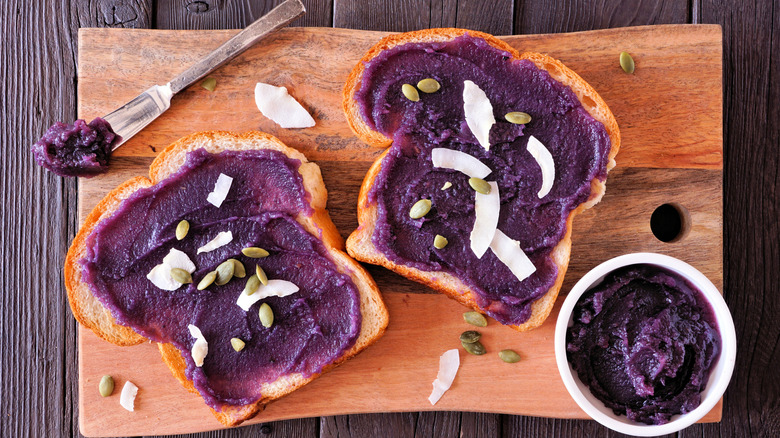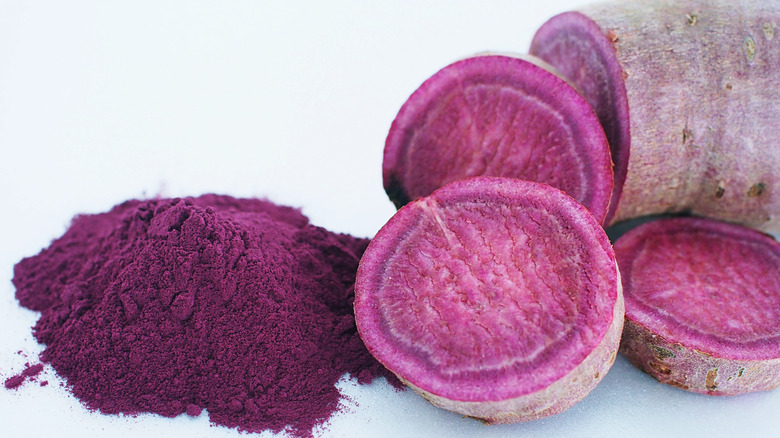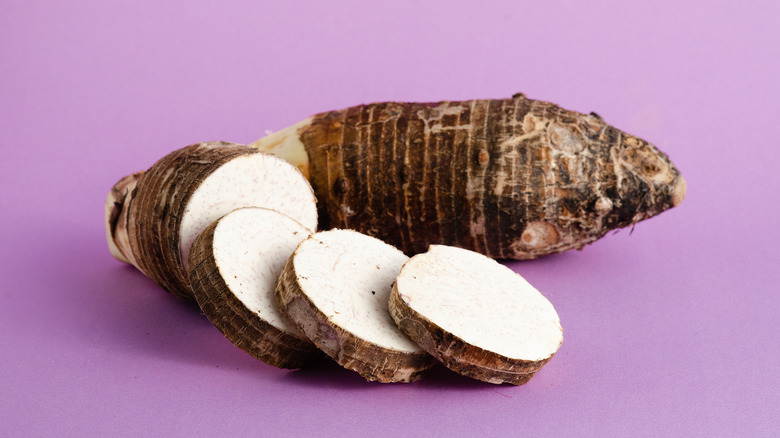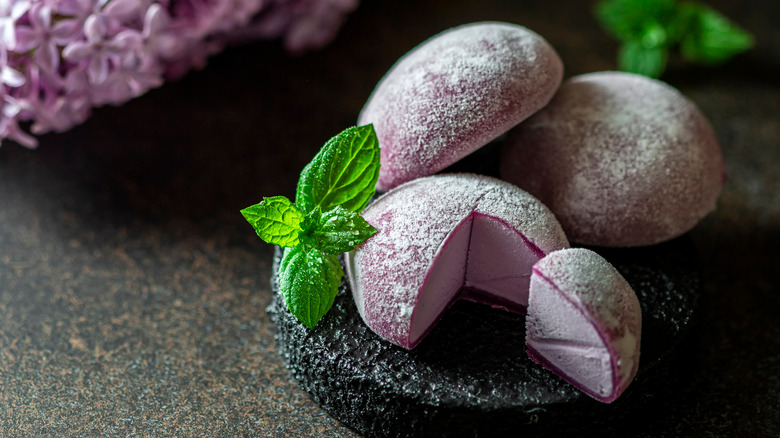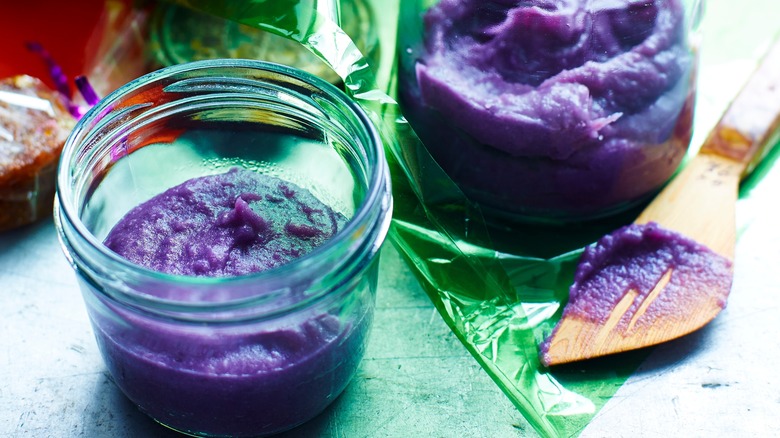What Is Ube And What Does It Taste Like?
Food trends are cropping up all of the time, some are fleeting (we're looking at you, galaxy-decorated food), while some remain popular for a long time (avocado toast, you're doing great sweetie). Not all of these fads are necessarily good or worth the hype, but every now and then a new food or concoction arises that really wows people, and transforms from a food trend into a new staple.
One of the growing trends that we think is here to stay includes ube (scientific name: Dioscorea alata), a delightful purple potato that's sweeping the nation, delighting us with its bright hues and delicious flavor. It's been creeping its way into different desserts across America, from lilac-hued ice creams to brilliantly purple cakes and more. You can find this tasty treat in trendy coffee shops and hip dessert eateries, though you might be hard-pressed to find it in the grocery store.
What is Ube?
According to Real Simple, ube is a purple yam that is indigenous to Asia, specifically grown in the Philippines. It was originally classified as camote, part of the sweet potato family (Convolvulaceae), but was later on classified as a yam, moving it to the Dioscorea family (via The Culture Trip). Yams are tubers, like potatoes, and are mostly cultivated in tropical parts of the world. These large tubers come in a range of colors, including yellow, white, purple, or pink.
"The skin is typically brown and rough, like tree bark. They vary in taste from sweet to bitter to tasteless and tend to be a bit on the dry starchy side," (via Brittanica). Ube has a bright purple color that is completely natural and is the same shape and size as sweet potatoes, but with the trademark rough skin of yams. Ube differs from other yams and potatoes in that it actually grows above ground on a vine, while other sweet potatoes grow below ground (per One Green Planet).
Ube vs Taro
The two tubers are often confused for each other, and while they do have somewhat similar tastes, they are two very different foods. Taro also originated in Southeast Asia, though now Japan grows several varieties of taro root (per The Daring Kitchen). While ube resembles a yam or sweet potato, taro looks more like a potato-shaped coconut, covered in grayish-brown or white skin. Some taro can develop a light purple color when cooked, but it's nowhere near the deep purple hues of ube. Uncooked taro is white inside, whereas ube is always purple.
According to The Daring Kitchen, "taro offers an earthy, nutty, coconut flavor to any dish or beverage you make. The taste of taro closely resembles that of a sweet potato," while ube tends to have a "rich sweet taste that's similar to vanilla and white chocolate." Ube becomes sticky and has a soft texture when cooked, while taro becomes drier and somewhat grainy, though still soft due to cooking.
What does Ube taste like?
Unlike most sweet potatoes and yams, which are traditionally served in savory dishes, ube is most popular in desserts (per Asian Food Network). Nicole Ponseca, the owner of two Filipino restaurants in New York City, describes the taste of ube in an interview with Mic as "an amalgamation of vanilla with the nuttiness of pistachio. But the flavor is quite gentle and not too intense." This lends it to be well-suited in popular Filipino desserts including halo-halo, cakes, ice creams, and candies.
Michael Tsang, the co-founder of Soft Swerve in New York, describes ube's taste as "a slightly nutty flavor and a hint of chestnut in it. It's not really recognizable for an American palate" (per Greatist). Ponseca said in an interview with Greatist that "often you see ube converted into jams and pastes called halaya," and that jam is mixed into ice creams, breads, cakes, and jelly rolls. The sweet and earthy flavor of ube combined with its beautiful and vibrant purple coloring makes for a dessert that's pleasing to both the eyes and the stomach.
Where to buy Ube
One downside of ube's tropical origins means that it can be tricky to locate fresh ube in stores. In an interview with Mic, Ponseca says it's incredibly difficult to find fresh ube, and she's only found it once in the U.S. You can buy it in other forms, however, and they work great for making baked goods or other desserts. One form, according to Mic, is ube extract, which looks like food coloring although it's actually made from ube and has ube flavor. Another way to buy this tuber is as a dehydrated powder, made from ube that's dried and then pulverized.
The most popular form is ube paste or jam (ube halaya) which is sold on Amazon or in most Filipino stores, according to Ponseca. These usually come sweetened, making them perfect for adding to baked goods, so you can create your own delicious purple creations at home if, like most of us, you can't seem to find a trendy dessert place near you that's caught on to the ube movement.
